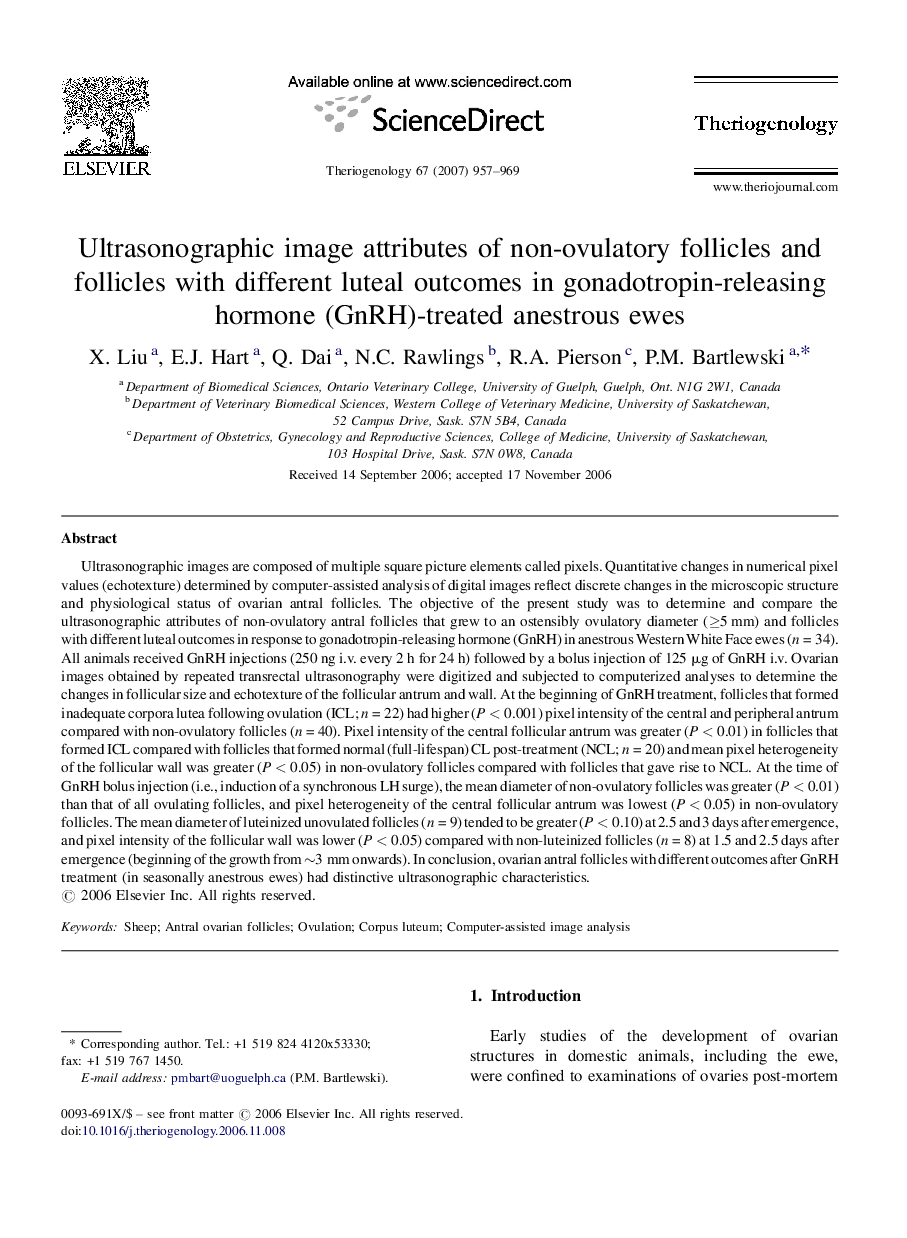| Article ID | Journal | Published Year | Pages | File Type |
|---|---|---|---|---|
| 2098301 | Theriogenology | 2007 | 13 Pages |
Ultrasonographic images are composed of multiple square picture elements called pixels. Quantitative changes in numerical pixel values (echotexture) determined by computer-assisted analysis of digital images reflect discrete changes in the microscopic structure and physiological status of ovarian antral follicles. The objective of the present study was to determine and compare the ultrasonographic attributes of non-ovulatory antral follicles that grew to an ostensibly ovulatory diameter (≥5 mm) and follicles with different luteal outcomes in response to gonadotropin-releasing hormone (GnRH) in anestrous Western White Face ewes (n = 34). All animals received GnRH injections (250 ng i.v. every 2 h for 24 h) followed by a bolus injection of 125 μg of GnRH i.v. Ovarian images obtained by repeated transrectal ultrasonography were digitized and subjected to computerized analyses to determine the changes in follicular size and echotexture of the follicular antrum and wall. At the beginning of GnRH treatment, follicles that formed inadequate corpora lutea following ovulation (ICL; n = 22) had higher (P < 0.001) pixel intensity of the central and peripheral antrum compared with non-ovulatory follicles (n = 40). Pixel intensity of the central follicular antrum was greater (P < 0.01) in follicles that formed ICL compared with follicles that formed normal (full-lifespan) CL post-treatment (NCL; n = 20) and mean pixel heterogeneity of the follicular wall was greater (P < 0.05) in non-ovulatory follicles compared with follicles that gave rise to NCL. At the time of GnRH bolus injection (i.e., induction of a synchronous LH surge), the mean diameter of non-ovulatory follicles was greater (P < 0.01) than that of all ovulating follicles, and pixel heterogeneity of the central follicular antrum was lowest (P < 0.05) in non-ovulatory follicles. The mean diameter of luteinized unovulated follicles (n = 9) tended to be greater (P < 0.10) at 2.5 and 3 days after emergence, and pixel intensity of the follicular wall was lower (P < 0.05) compared with non-luteinized follicles (n = 8) at 1.5 and 2.5 days after emergence (beginning of the growth from ∼3 mm onwards). In conclusion, ovarian antral follicles with different outcomes after GnRH treatment (in seasonally anestrous ewes) had distinctive ultrasonographic characteristics.
